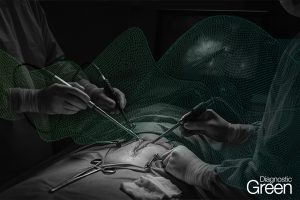Background: Intraoperative biliary anatomy recognition is crucial for safety during laparoscopic cholecystectomy, since iatrogenic bile duct injuries represent a fatal complication, occurring in up to 0.9% of patients. Indocyanine green fluorescence cholangiography (ICG-FC) is a safe and cost-effective procedure for achieving a critical view of safety and recognizing early biliary injuries. The aim of this study is to compare the perioperative outcomes, usefulness and safety of standard intraoperative cholangiography (IOC) with ICG-FC with intravenous ICG. Methods: Between 1 June 2021 and 31 December 2022, 160 patients undergoing elective LC were randomized into two equal groups: Group A (standard IOC) and group B (ICG-FC with intravenous ICG). Results: No significant difference was found between the two groups regarding demographics, surgery indication or surgery duration. No significant difference was found regarding the visualization of critical biliary structures. However, the surgeon satisfaction and cholangiography duration presented significant differences in favor of ICG-FC. Regarding the inflammatory response, a significant difference between the two groups was found only in postoperative WBC levels. Hepatic and renal function test results were not significantly different between the two groups on the first postoperative day, except for direct bilirubin. No statistically significant difference was noted regarding 30-day postoperative complications, while none of the complications noted included bile duct injury events. Conclusions: ICG-FC presents equivalent results to IOC regarding extrahepatic biliary visualization and postoperative complications. However, more studies need to be performed in order to standardize the optimal dose, timing and mode of administration.




